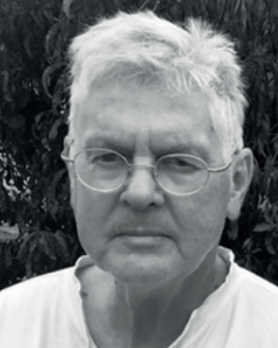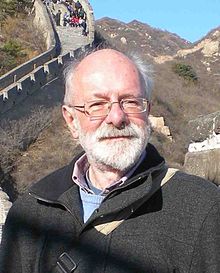In the broadest sense, cultural resource management (CRM) is the vocation and practice of managing heritage assets, and other cultural resources such as contemporary art. It incorporates Cultural Heritage Management which is concerned with traditional and historic culture. It also delves into the material culture of archaeology. Cultural resource management encompasses current culture, including progressive and innovative culture, such as urban culture, rather than simply preserving and presenting traditional forms of culture.

Uluru, also known as Ayers Rock and officially gazetted as Uluru / Ayers Rock, is a large sandstone formation in the centre of Australia. It is in the southern part of the Northern Territory, 335 km (208 mi) southwest of Alice Springs.

Australian art is any art made in or about Australia, or by Australians overseas, from prehistoric times to the present. This includes Aboriginal, Colonial, Landscape, Atelier, early-twentieth-century painters, print makers, photographers, and sculptors influenced by European modernism, Contemporary art. The visual arts have a long history in Australia, with evidence of Aboriginal art dating back at least 30,000 years. Australia has produced many notable artists of both Western and Indigenous Australian schools, including the late-19th-century Heidelberg School plein air painters, the Antipodeans, the Central Australian Hermannsburg School watercolourists, the Western Desert Art Movement and coeval examples of well-known High modernism and Postmodern art.

Peter John Ucko FRAI FSA was an influential English archaeologist. He served as Director of the Institute of Archaeology at University College London (UCL), and was a Fellow of both the Royal Anthropological Institute and the Society of Antiquaries. A controversial and divisive figure within archaeology, his life's work focused on eroding western dominance by broadening archaeological participation to developing countries and indigenous communities.

Aṉangu is the name used by members of several Aboriginal Australian groups, roughly approximate to the Western Desert cultural bloc, to describe themselves. The term, which embraces several distinct "tribes" or peoples, in particular the Ngaanyatjarra, Pitjantjatjara and Yankunytjatjara groups, is pronounced with the stress on the first syllable: [ˈaɳaŋʊ].

Anthropology of art is a sub-field in social anthropology dedicated to the study of art in different cultural contexts. The anthropology of art focuses on historical, economic and aesthetic dimensions in non-Western art forms, including what is known as 'tribal art'.

Alfred Antony Francis Gell, was a British social anthropologist whose most influential work concerned art, language, symbolism and ritual. He was trained by Edmund Leach and Raymond Firth and did his fieldwork in Melanesia and tribal India. Gell taught at the London School of Economics, among other places. He was also a Fellow of the British Academy. He died of cancer in 1997, at the age of 51.

Roger Llewellyn Dunmore Cribb was an Australian archaeologist and anthropologist who specialised in documenting and modelling spatial patterns and social organisation of nomadic peoples. He is noted for conducting early fieldwork amongst the nomadic pastoralists of Anatolia, Turkey; writing a book on the archaeology of these nomads; pioneering Australian archaeology and anthropologies' use of geographical information systems, plus genealogical software; and conducting later fieldwork documenting the cultural landscapes of the Aboriginal peoples of Cape York Peninsula.

Peter Sutton FASSA is an Australian social anthropologist and linguist who has, since 1969, contributed to: recording Australian Aboriginal languages; promoting Australian Aboriginal art; mapping Australian Aboriginal cultural landscapes; and increasing societies' general understanding of contemporary Australian Aboriginal social structures and systems of land tenure.

Claire Smith, is an Australian archaeologist specialising in Indigenous archaeology, symbolic communication and rock art. She served as Dean (Research) of the College of Humanities, Arts and Social Sciences at Flinders University in 2017-2018 and, prior to that, as head of the Department of Archaeology. She served two terms as president of the World Archaeological Congress from 2003 to 2014 and greatly increased the organization's size and visibility. Among her many publications is the Encyclopedia of Global Archaeology.

Nicholas J. Saunders is a British academic archaeologist and anthropologist. He was educated at the universities of Sheffield, Cambridge, and Southampton. He has held teaching and research positions at the National Autonomous University of Mexico, the University of the West Indies, Dumbarton Oaks, Washington D.C., and at University College London, where he was Reader in Material Culture, and undertook a major British Academy sponsored investigation into the material culture anthropology of the First World War (1998–2004). As of 2014 Saunders was Professor in the Department of Anthropology and Archaeology at the University of Bristol, where he was responsible for the MA programmes in historical archaeology and conflict archaeology. As of 2018, he is Emeritus Professor of Material Culture in that department. He is a prominent contributor to the nascent field of conflict archaeology, and has authored and edited numerous academic publications in the field. In addition to his research specialising in the anthropology of 20th-century conflicts and the archaeology of World War I theatres in Belgium, France and the Middle East, Saunders has also conducted extensive fieldwork and research in pre-Columbian and historical archaeology of the Americas. He has been involved with major museum exhibitions in London, Ypres (Belgium), Tübingen (Germany), and at the Centre Pompidou-Metz (France). Saunders has investigated and published on material cultures and landscapes of Mesoamerica, South America, and the Caribbean. His most recent research has been on the aesthetics of brilliance and colour in indigenous Amerindian symbolism, an extensive survey investigation of the Nazca Lines in Peru, the anthropological archaeology of twentieth-century conflict and its legacies along the Soca (Isonzo) Front on the Slovenian-Italian border, and the conflict artworks of the Chinese Labour Corps on the Western Front during and after the First World War.
Julian Stewart Thomas is a British archaeologist, publishing on the Neolithic and Bronze Age prehistory of Britain and north-west Europe. Thomas has been vice president of the Royal Anthropological Institute since 2007. He has been Professor of Archaeology at the University of Manchester since 2000, and is former secretary of the World Archaeological Congress. Thomas is perhaps best known as the author of the academic publication Understanding the Neolithic in particular, and for his work with the Stonehenge Riverside Project.
The archaeology of religion and ritual is a growing field of study within archaeology that applies ideas from religious studies, theory and methods, anthropological theory, and archaeological and historical methods and theories to the study of religion and ritual in past human societies from a material perspective.
Paul S.C. Taçon is an anthropologist and archaeologist based in Australia. He has conducted field work in Australia, Botswana, Cambodia, Canada, China, India, Malaysia, Myanmar, Thailand, South Africa and the United States. In 2011, he was appointed the first Chair in Rock Art research at Griffith University on the Gold Coast, Australia. Taçon has made several key archaeological discoveries in Australia, most notably in western Arnhem Land (NT) and Wollemi National Park (NSW). These include the earliest rock art evidence of warfare in the world, the origins of the Rainbow Serpent, significant new Arnhem Land rock art sites, rock art discoveries in Wollemi National Park and the oldest rock paintings of Southeast Asian watercraft in Australia.
Professor Jon Charles Altman is a social scientist with a disciplinary focus on anthropology and economics. He is an emeritus professor of the Australian National University currently affiliated to the Regulatory Institutions Network (RegNet), College of Asia and the Pacific, ANU. He was the founding director of the Centre for Aboriginal Economic Policy Research (CAEPR) at the Australian National University and then a research professor there until 2014 when he retired. He is a Fellow of the Academy of the Social Sciences in Australia and an Honorary Fellow of the Royal Society of New Zealand. From 2008 to 2013 he was an Australian Research Council Australian Professorial Fellow. In late 2015 Altman moved to Melbourne to take up an appointment from 1 February 2016 as research professor at the Alfred Deakin Institute for Citizenship and Globalization at Deakin University.
Harry Lourandos is an Australian archaeologist, adjunct professor in the Department of Anthropology, Archaeology and Sociology, School of Arts and Social Sciences at James Cook University, Cairns. He is a leading proponent of the theory that a period of hunter-gatherer intensification occurred between 3000 and 1000 BCE.
The Karieri people were an Indigenous Australian people of the Pilbara, who once lived around the coastal and inland area around and east of Port Hedland.
The Katiti Aboriginal Land Trust is a land trust for a block of land in the southwest of the Northern Territory of Australia located in the locality of Petermann. It was created through the Katiti Land Claim in 1980. The trust's owners include Pitjantjatjara, Yankunytjatjara and Luritja people. The block of land is officially referred to as Northern Territory Portion 1818. It borders the larger Petermann Land Trust area and Uluṟu–Kata Tjuṯa National Park to the north and west, and two pastoral stations to the east and south: Curtin Springs and Mulga Park. The town of Yulara is excluded from the Land Trusts, and sits between the Katiti block and Uluṟu–Kata Tjuṯa National Park.
Dr Josephine McDonald is an Australian archaeologist and Director of the Centre for Rock Art Research + Management at the University of Western Australia. McDonald is primarily known for her influence in the field of rock art research and her collaborative research with Australian Aboriginal communities.
Sally Kate May, usually cited as Sally K. May, is an Australian archaeologist and anthropologist. She is an Associate Professor of Archaeology and Museum Studies at the University of Adelaide, Australia. She is a specialist in Indigenous Australian rock art and Australian ethnographic museum collections.










